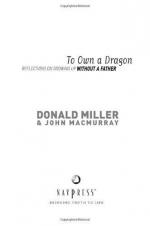
|
| Name: _________________________ | Period: ___________________ |
This test consists of 15 multiple choice questions and 5 short answer questions.
Multiple Choice Questions
1. As a child, what type of clubs does Miller think men participated in?
(a) Card clubs.
(b) Clubs that shared secret information about women and cars.
(c) Clubs that only let certain people in.
(d) Country clubs.
2. How long does Miller live in his new home in Boring, Oregon?
(a) A couple of years.
(b) Four years.
(c) Forever. He never leaves.
(d) Four months.
3. How, specifically, does Mr. Gentiles help Miller?
(a) He encourages Miller to write for the church youth newsletter.
(b) He gives Miller a job at the church.
(c) He teaches Miller to read the Bible.
(d) He prays for Miller.
4. According to Miller, which of the following is not a positive characteristic of God?
(a) Encouragement.
(b) Love.
(c) Ownership.
(d) Abandonment.
5. Chapter 5 has a high degree of tension and describes a significant turning point in Miller's life. In literature this is referred as the _____________.
(a) Climax of the book.
(b) Prologue of the book.
(c) Summary of the book.
(d) Middle of the book.
6. What group of people does Miller suggest are similar to orphaned elephants?
(a) Foster children in the child welfare system.
(b) All prisoners in in the United States.
(c) Male prisoners who grow up without a father.
(d) Children from single-parent families.
7. Where is Miller offered a home when living in Boring, Oregon?
(a) In a house shared with an elderly person.
(b) In a trailer with coworkers.
(c) In an apartment with friends.
(d) In a garage apartment at the MacMurrays.
8. The author wants the reader to encourage and relate to what type of men?
(a) Men who are not yet fathers.
(b) Men with fathers.
(c) Men who are fathers.
(d) Men who grew up or are being raised without fathers.
9. MIller learns many lessons from watching the MacMurray family? Which of the following is a lesson that Miller does not learn?
(a) Children are as important as adults.
(b) Families need a lot of time apart from each other.
(c) Fathers prefer to spend time with children instead of in front of the TV.
(d) Families work together.
10. According to the author, what percentage of male prisoners grew up without a father?
(a) 95%.
(b) 75%.
(c) 85%.
(d) 25%.
11. Miller uses these stories about animals to illustrate what point in Chapter 2?
(a) To suggest the power of fathers in today's society.
(b) To find an explanation for his fatherlessness.
(c) To explain the cause of fatherlessness in the United States.
(d) To demonstrate the need for two-parent families in the United States.
12. Who gives Miller the key to his new home?
(a) Terri MacMurray.
(b) Elle MacMurray.
(c) John MacMurray.
(d) Cassie MacMurray.
13. Writing this book appears to have been what type of experience for the author?
(a) Cathartic.
(b) Difficult.
(c) Selfish.
(d) Boring.
14. Why does Miller not trust the motivations of male authority?
(a) Because he has had numerous run-ins with the police.
(b) Because men have been mean to him.
(c) Because he is afraid of men.
(d) Because he does not have a strong male authority figure in his life.
15. What happens to elephant's behavior when they reach puberty?
(a) They become very sexually aggressive.
(b) They become extremely intelligent.
(c) They become increasingly violent.
(d) They become docile.
Short Answer Questions
1. This prologue is does which of the following?
2. Prior to accepting God as a father, Miller describes his journey as ________.
3. How does Miller grasp the "God as father" concept, initially?
4. What does the landlord's son, who attempts to fill in as a father figure on a camping trip, forget?
5. Miller describes his mother as being exhausted because of him. He learns the real reason she is exhausted. What is this?
|
This section contains 639 words (approx. 3 pages at 300 words per page) |

|




